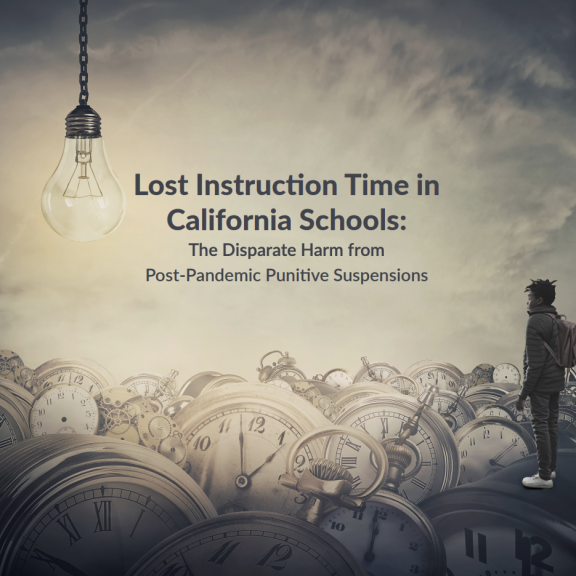New Data: Homeless youth are being increasingly kicked out of California schools
Update to Lost Instruction report: School administrators dramatically increased disciplinary exclusion of homeless youth to the highest rate in 6 years
LOS ANGELES — All California students deserve an engaging education that supports and prepares them for college, career, and life beyond school. Research does not support the long-standing practice of kicking students out of school for minor misconduct. Unfortunately, after years of declining rates, alarming new data (included in our January 2024 Update) shows that school administrators are increasingly denying students who are homeless access to school.
The highest rates in 2023 show Black and Native American Homeless youth, experienced a dramatic increase in rates of lost instruction due to out of school suspensions. While some may have access to shelters, in many cases these children are literally being exiled to the streets.
Specifically, Black homeless youth are losing an average of 90 school days per 100 enrolled students due to disciplinary removals in 2023, an increase of 21 days from 69 the year before (as reported in our Lost Instruction Report). Native American homeless youth lost 75 days per 100 enrolled — an increase of 17 days from the rate of 58 in 2022. These rates of lost instruction are 7 to 10 times higher than the state average for all students, which also increased in 2023.
These troubling trends are the latest findings from research conducted by Ramon Flores of the Civil Rights Project at UCLA and Dan Losen, Director of Education at the National Center for Youth Law. They jointly released a statewide Lost Instruction Report in October 2023 (before the newest data on discipline were released). The complete update of the statewide rates for 2023 covers every racial/ethnic group, and students with disabilities.
This update is being released now to encourage the California Department of Education to resolve to take action in 2024. These high and increasing rates mean that the students with the greatest needs are also losing the most instructional time and increasing their risk for dropping out of school.
“CDE needs to seriously increase their oversight of districts that are failing to meet the needs of youth of color, especially those who arrive at school from unstable home environments,” said Flores, with UCLA.
Added Losen, who is both a researcher and lawyer: "The higher rates likely reflect unjustifiable resource cuts, and/or maintaining unjustifiable discipline policies amidst an increase in the needs of students. Moreover, districts that cause high and racially disproportionate harm to homeless youth, foster youth, and students with disabilities are likely violating the civil rights of these students.”
###






